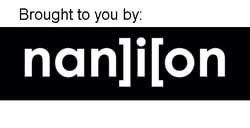Channelopathies Resolved via Cryo-EM and X-Ray Crystallography

Don't miss this 2-day interactive online event where the experts will be discussing Current Challenges in Safety Pharmacology and Cardiac Physiology, in-silico modelling and Best Practices and Evolvements of Safety Pharmacology Methods.

Event Summary:
Muscle contraction requires a tight communication between Ca2+-permeable ion channels located in the plasma membrane (e.g., L-type calcium channels (CaVs)) and in the sarcoplasmic reticulum (e.g., ryanodine receptors (RyRs)).
In cardiac muscle, Ca2+ entering through CaV1.2 can stimulate the nearby RyR2 isoform, through a process of Ca2+-induced Ca2+ release. In skeletal muscle, however, the coupling is thought to occur mechanically, with voltage-dependent conformational changes in CaV1.1 being transmitted to RyR1, either through direct or indirect interactions.
Specific mutations in these ion channels can give rise to channelopathies such as malignant hyperthermia, central core disease (CCD) and stress-induced cardiac arrhythmia (catecholaminergic polymorphic ventricular tachycardia).
Attend this webinar to learn how Dr. Filip Van Petege’s lab is:
- Solving crystal structures of isolated RyR domains in wild type and disease mutant forms, which shows that many mutations cause conformational changes
- Exploring excessive phosphorylation of RyRs and how this is linked to a range of acquired disorders
- Investigating the mechanical coupling between CaV1.1 and RyR1 in skeletal muscle
Keynote Speaker Information:

Product Manager of the Orbit Product Family, Nanion Technologies

Professor of Biochemistry and Molecular Biology, University of British Columbia
